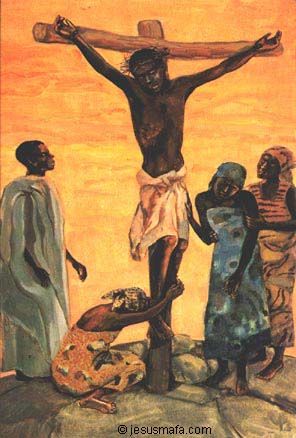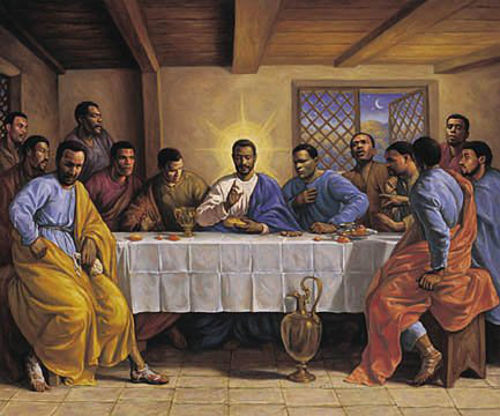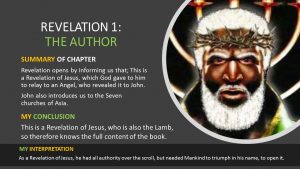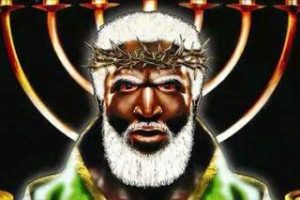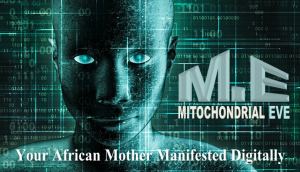The Christ: Revealed & Followed in this Temple?
The 10 Answers identifying what Christ is being followed.
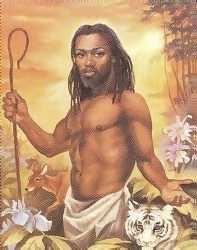 Below are Our Temple answers to the 10 question suggested for individuals to test and determine The Christ that they or anyone else is following. We therefore here present our own answers to these questions.
Below are Our Temple answers to the 10 question suggested for individuals to test and determine The Christ that they or anyone else is following. We therefore here present our own answers to these questions.
It is of the utmost importance that visitors to this Temple website, are also fully aware of the Actual Christ that is being proclaimed and followed through this website.
Therefore in answering these 10 questions below, we endeavoured were possible to incorporate the actual words of Marcus Garvey and/or Haile Sellassie I the Foundations, the Motivation and the Divine Inspiration, behind all the information and material that is found and featured within and throughout this Temple website.
The Temple’s 10 Answers
1. Who is The Christ?
The actual Christ Revealed and manifested through This Temple.
Firstly it should be fully and firmly understood that within this website The Christ is actually and fundamentally The Karast, see the Name of Christ Page for evidence why. Other than the difference in translation of the name from English, Christ; through Greek, Kristos; and back to its original source in Egyptian, Karast. Karast like its predecessors also means to anoint or to be a anointed, however The Karast although meaning The Anointed One, is not a simple re-translation of Christ back to its original source, but also an informed, restored cultural awareness that enables a re-interpretation of what this name symbolises in its original context.
Where Karast, unlike Christ or Kristos, is link culturally and inexplicitly, as a word, to the concept and idea, of;
- God;
- The Gift of Life;
- Good Works & Righteous Deeds;
- Death;
- Judgement Day
- Resurrection
- Heaven,
- Punishments
and Eternal Life, simultaneously. The Karast therefore, unlike Christ, Kristos & even Messiah, does not simply mean anointed, that can be applied to a wide and varied category of acts or people , but actually can Only be applied or used to refer to The Karast;
- the one Who is God,
- Lived Without sin,
- Died,
- defeated death and satan, so
will sit as Judge on the day of Judgement, when every Soul will be resurrected to, blessings or condemnation.
So in answer to the 1st question, Who is The Christ?
the answer is;
The Christ, is The Karast
2. What was his actual name?
The name we use in this Temple to refer exclusively to the Christ.
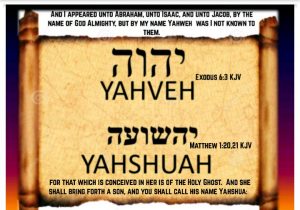 The name used to call upon The Karast (Christ), the Saviour of the World, is of the utmost importance. In fact it is possibly the most important thing in the entire Christian faith and belief system. As everything, attempted or accomplished is done in this name. In addition to this it is in this name that every Christian is baptised and the name Christians prayer to the Father in hope for an answer, as well as, what they turn to in times of trouble.
The name used to call upon The Karast (Christ), the Saviour of the World, is of the utmost importance. In fact it is possibly the most important thing in the entire Christian faith and belief system. As everything, attempted or accomplished is done in this name. In addition to this it is in this name that every Christian is baptised and the name Christians prayer to the Father in hope for an answer, as well as, what they turn to in times of trouble.
Ironically although having such a great importance, to Christians, it is often replaced by them, with the phrase the Son, such as; “In the name of The Father, The Son and the Holy Spirit”, although some do add Our Lord Jesus Christ at the end, but this is not standard or compulsory.
Nevertheless no Christian would deny the importance of the actual name of the Karast. Now from a historical and biblical context, we know that he was an Israelite , Jew who spoke possibly both Hebrew and Aramaic and He was given two specific names in the Bible at birth, the first Emmanuel meaning “God with Us”, Fulfilling a prophesy from the Book of Isaiah Isa_7:14 and confirmed at Mat_1:23 and Yahsua (יהושׁע / יהושׁוּע – yehôshûa‛) (Jesus) meaning “God’s Salvation”, Luk_1:31.
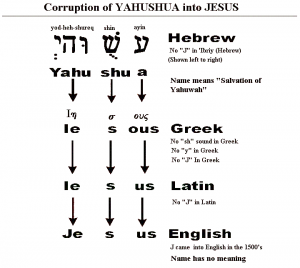 Both these names Immanuel (Emmanuel) or Yehoshua (Yahshuah) are the accepted names used in this Temple to refer to the Word Incarnate, the Son of God, as both these names specifically relate to the nature of The Karast, i.e God with Us, & God’s Salvation. Nevertheless although we accept that most modern Christian choose or prefer to use the modern English translation of the name Yehoshua i.e. Jesus. We do not ascribe this to be a valid name to be used in this Temple, as not only does it not translate Yehoshua into English, which is Joshua, but has no meaning outside of its attachment to Yehoshua, which it doesn’t translate.
Both these names Immanuel (Emmanuel) or Yehoshua (Yahshuah) are the accepted names used in this Temple to refer to the Word Incarnate, the Son of God, as both these names specifically relate to the nature of The Karast, i.e God with Us, & God’s Salvation. Nevertheless although we accept that most modern Christian choose or prefer to use the modern English translation of the name Yehoshua i.e. Jesus. We do not ascribe this to be a valid name to be used in this Temple, as not only does it not translate Yehoshua into English, which is Joshua, but has no meaning outside of its attachment to Yehoshua, which it doesn’t translate.
Therefore similar to the word, Christ, we use the name Jesus, solely for the benefit of our visitors, who will find it very difficult in the initial stages to form a relation or even consider any other name from what they have been taught.
However within this Temple we use the original name, in its original context to refer to Incarnate Word, Yehoshua, God’s Salvation, nevertheless like with the Christ & Karast, we re-interpret this word or name, in-line with a restored cultural awareness that enables a re-interpretation of what this name symbolises in its original context and for us in the modern age.
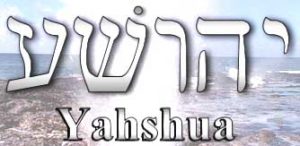 Therefore with the knowledge that the original name was written with out vowels and therefore only Yhsh and since we no that Yah is used as an abbreviation for God, throughout the Bible and that Shua means Salvation in Hebrew, we can also be assured that even the name Yahshuah is possibly a more accurate pronunciation that the more attested Yehoshua, as Yeh is not used to call upon God. Furthermore Yahshuah offers us an even a closer and more intimate connection, relation and insight into the meaning of the name of the Incarnate Word, as it also has a literal, historical and cultural link, specifically linked to the word Karast that we use to replace Christ.
Therefore with the knowledge that the original name was written with out vowels and therefore only Yhsh and since we no that Yah is used as an abbreviation for God, throughout the Bible and that Shua means Salvation in Hebrew, we can also be assured that even the name Yahshuah is possibly a more accurate pronunciation that the more attested Yehoshua, as Yeh is not used to call upon God. Furthermore Yahshuah offers us an even a closer and more intimate connection, relation and insight into the meaning of the name of the Incarnate Word, as it also has a literal, historical and cultural link, specifically linked to the word Karast that we use to replace Christ.
Like Karast, Yahshuah can be linked explicitly to Ancient Egyptian African Culture & Tradition, enabling a far more insightful understanding of the name, of the Incarnate Word, through these Ancient & Restored Spectacles.
A breakdown of this name within the Ancient Egyptian language and culture;
YAH = GOD SHU = SPIRIT AH = MAN
As can be seen from the above analysis not only does this Temple name for the Word of God, coincide with its Hebrew meaning, but to a degree, the Egyptian translation, also seems to include, confirm and relate exactly what these Hebrew names actually mean, i.e. How is or can God be with us in the case of Immanuel and what is Yehoshua God’s Salvation?
Both these questions for both these separate and completely different names, are both answered simultaneously and with an accuracy beyond human understanding and comprehension, before the Word Was even Made Flesh, i.e.
How is God with us (Immanuel) & What is God’s Salvation (Yehoshua)
YAH-SHU-AH
GOD’s – SPIRIT – IN MAN
3. What is his physical image?
The image of The Christ as featured and presented throughout this Temple website.
 It will be recognised as soon as you enter the Temple of Yahshuah website that all the images of Yahshuah feature Him as black skinned, specifically associating Him with and to African and P.R.O.A.D. Nevertheless this is in no way done to counter, challenge, disrespect or discredited, any images of Yahshuah that exist. Neither are the images presented to add or to join in the controversial and sensitive debate surrounding the true skin colour of the Word Incarnate.
It will be recognised as soon as you enter the Temple of Yahshuah website that all the images of Yahshuah feature Him as black skinned, specifically associating Him with and to African and P.R.O.A.D. Nevertheless this is in no way done to counter, challenge, disrespect or discredited, any images of Yahshuah that exist. Neither are the images presented to add or to join in the controversial and sensitive debate surrounding the true skin colour of the Word Incarnate.
This particular issue in truth is immaterial and irrelevant, in our current endeavours. The images that are used throughout this website are presented and are featured in the spirit of Truth.
Not that we claim that they are in anyway a true reflection of the Image of The Karast, but neither do, we accept any image, regardless of age and authenticity, to represent any true likeness of the Saviour of the World, either.
We offer this in the Spiritual of Truth, in the sense that;
“It is evident that Christ had in his veins the blood of all mankind and
belonged to no particular race. Christ was god in the perfect sense of his
mind and soul. His spirit was truly God’s spirit”
Words of Marcus Garvey
Therefore we accept that the Christ belongs to all people, racially and spiritually, without exception, division or measure. This being the fact and the case, each individual themselves is a reflection of the Christ as He Dwells in All people spiritually, however, if that individual lives that physical spiritual life assigned by the Christ, then He or She, become literally a Physical Living Embodiment and Manifestation of Yahshuah, i.e Christ-IN-Man/Woman or Christ-Like.
 It is on this basis alone and upon this foundation that all the images of Yahshuah are featured Black within this website, as these images, specifically represent and feature The Christ, as he has been reveal to and through African Black people specifically, therefore He could/should and can ONLY be presented in there own likeness, in TRUTH.
It is on this basis alone and upon this foundation that all the images of Yahshuah are featured Black within this website, as these images, specifically represent and feature The Christ, as he has been reveal to and through African Black people specifically, therefore He could/should and can ONLY be presented in there own likeness, in TRUTH.
It should also be noted that any Black person who, does not see the Christ in his own mind as looking like him or herself, it will be very difficult, not impossibly, but very very difficult to truly absorbed and then manifest the Christ into their actual lives, their bodies, their minds and their spirituality, as in truth He would bare no resemblance to them, so they would have to become and resort to be, something other than what Yah created them to be, which is obviously contrary to Truth.
So the Image of Yahshuah Karast within this Temple is and will always be featured black, without apology, because Yah knew exactly what He was doing when he made different Hues. So we think it expected when people of any Hue, find and discover the True & Living God that they would feature HIM or depict HIM as they see themselves.
4. What was his character and personality?
The character and personality of Christ as presented through this Temple website.
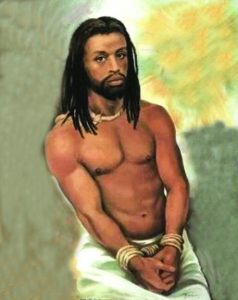 Now the way in which Yahshuah Karast (Jesus Christ) is perceived, in regards to His personality and character is also very important to how an individual, worships, connects with and incorporates this personality & character that they are supposedly trying to emulate, into their own individual lives.
Now the way in which Yahshuah Karast (Jesus Christ) is perceived, in regards to His personality and character is also very important to how an individual, worships, connects with and incorporates this personality & character that they are supposedly trying to emulate, into their own individual lives.
It will be quite evident on visiting this website that not only is the image of the Karast (Christ) perceived differently but also his personality and his character , is possibly quite dissimilar to the one generally and popularly promoted by most Christian’s. Here we will attempt to present why we believe that the personality and the character of the Karast, as featured within this Temple is so different to the popular perceived Christ.
We will achieve this by analysing his accepted characteristics, his attitude, his behaviour and actual documented life experiences. Putting this first into context, to then present our particular perspective of his true personality and character, or least how it is perceived and has been reprieved by Africans and other oppressed people throughout the centuries.
The Characteristics
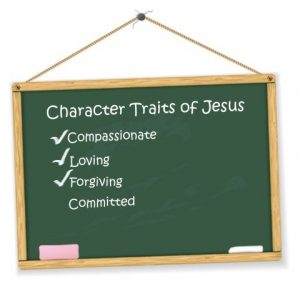 Firstly their are the Characteristics of the Karast, which are of Him being; Righteous, Sinless, Caring, Kind, Loving, Passionate, Honest, Law abiding, Peaceful, Humble, Empathetic, Friendly, Devoted, Focussed, Tolerant, Compassionate, and all in all a special Divine human being.
Firstly their are the Characteristics of the Karast, which are of Him being; Righteous, Sinless, Caring, Kind, Loving, Passionate, Honest, Law abiding, Peaceful, Humble, Empathetic, Friendly, Devoted, Focussed, Tolerant, Compassionate, and all in all a special Divine human being.
This Temple website accept all of these same exact qualities, as well as any other divine characteristic that could be attributed to the Karast, no different for most if not all other Christians.
However how we in the past and do presently, as evidenced throughout history and with this website, interpret, perceive and translate these qualities and characteristics to form our idea of His personality, is to a degree contradictory to traditional notions. This we believe is because African people continue to relate to the whole experience, the life and tribulations as well as see the Sacrifice as a Victor not Victim. This is clearly illustrated when we put these same characteristic into the context of His actual life and experiences.
The Personality
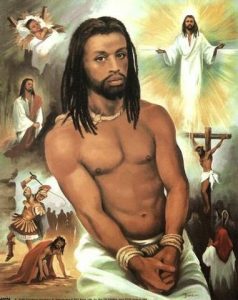 Now the personality of the Karast, from an African or even logical point of view, can only be assessed in the context of how he manifested these Divine characteristic, within the experience of his actual life, taking into account, his environment and the circumstances that he had found himself in.
Now the personality of the Karast, from an African or even logical point of view, can only be assessed in the context of how he manifested these Divine characteristic, within the experience of his actual life, taking into account, his environment and the circumstances that he had found himself in.
Although logical, ironically this detail is seldom engaged to form people’s idea’s of Yahshuah’s personality and character, but without its inclusion, it could be argued that any idea’s or perceptions would obviously be lacking and not conclusive.
Therefore it is necessary first, before we conclude what idea of the Karast’s personality and character to reflect upon his life and his experiences.
His life experiences could be summarised as such;
- He was born of a suppressed and oppressed people in Judea and He was exiled soon after His birth and became, with His family a refugee in Egypt Africa;
- In latter life he began to preach openly, challenging not only the elders of His tribe, but also the powerful empire of Rome;
- He bore witness to the execution and murder, of possibly one of His closest friends and relatives, John the Baptist, for preaching a similar doctrine to His own;
- He often, approached crowds of unknown people and challenged them openly, even stopping them on occasion for performing the acts they had intended;
- He walked about freely, in the open preaching and defying both the traditional tribal authorities, as well as the state;
- He actually visited the Temple the centre of authority in the land that had scores of guards, attendants, priests and other influential figures and He physically ransacked the building, without having any reprisal;
- Some of his disciples, carried weapons that one even used is his defence, although he condemned this action.
- He also after his arrest and being tortured, never relinquished is faith, his dignity or his mission, continuing to be outspoken and defiant of the authorities, who had his physical life in their hands.
- Up until his final breath he focus was compassion for his people, even those that were killing Him.
Unfortunately although possibly the most important aspect of his Life, His Gospel and Mission, has resulted in most Christian’s and people in general, disregarding the rest of His life, his circumstance, what, how and why he taught what he did, in favour of this final sacrificial and most significant event, in the evaluation of his Character. To a degree it has resulted in people summarising his life and his personality and character to be a Sacrificial Lamb
This has primarily resulted in a Christ that is perceive by most, from a perspective of Him being;
The timid and helpless
Lamb to the Slaughter and the Victim,
opposed to being
The Lamb of God, Sacrificed in Victory.
It is these two differing perspectives held in relation to Christ that will determine how a individual perceives the Character and personality of Christ and also how they internalise and try to emulate.
The Character
So rather than the Christ being perceived as, a passive although charismatic, a humble teacher and preacher, who stayed far from confrontation or from challenging authority and the state, who dealt with purely spiritual and religious matters, whilst continuing to live a peaceful righteous life, whilst remaining silent to the injustices prevalent before their eyes, as is emulated by most Christians. To be a Christ that is;
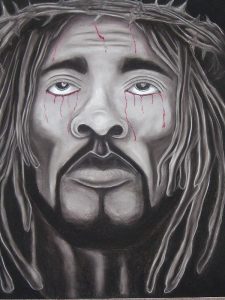 Confident of victory
Confident of victory- Fearless of consequence
- Focussed & Devoted to Justice
- Confronts & Challenges injustice
- Challenges tribal & state authority
- Is physically & mentally Strong & Courageous
- Was Rebellious & Revolutionary
- Was Self-Determined & Self-Motivated (free-will)
- Was Unapologetic & Uncompromising
- Stood up for weaker, ill informed, poor & oppressed people
- He was alone and moved often in a group or gang
- He was a menace and threat to social order,
The list could go on and on, however suffice to say that when a individual, group or nation, finds themselves in a similar circumstance that the Christ experienced, then it would be natural, evident and not surprising that it would be the Character & Personality of the Christ, from this specific perspective that would both appeal to not only there spiritual but also their physical needs.
Hence why in The Temple of Yahshuah, as well as demonstrated throughout the lives of African people and many other oppressed people over the centuries, across the globe, The Karast (Christ) has been and remains to be seen as;
The Greatest & Most Successful Ever, Peaceful;
Reformer, Revolutionary and Freedom Fighter
that the World Has Ever Known.
5. What is His nature & relationship to God the Father?
How this Temple perceives the Nature & Unique Relationship of Christ to The Father.
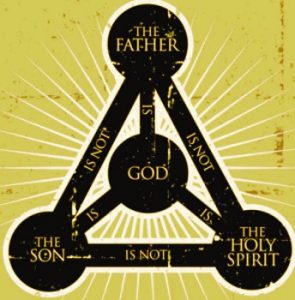 Now the Nature of Christ as a ideology, has caused much debate and controversies over the centuries, in fact from the very beginning of the Christian Tradition. Immediately after Yahshuah’s ascent, even his own disciples and apostles, differed and struggled with the concept of His true nature. This resulted in a periphery of Christian sects, groups, traditions, philosophies, doctrines and heresies, prominent within the first three centuries. With all these different sects claiming to be the true custodians of the Gospel of Yahshuah and his Disciples or Apostles, therefore having the correct understanding and knowing his true nature. This includes the; Ebionites, Marcionites, Thomasines, Montanism, Ascetics, Proto-Orthodox, Gnostic’s, Arian’s , etc, etc, etc, all claiming that their own particular insight explains the fullness of the true nature of Christ.
Now the Nature of Christ as a ideology, has caused much debate and controversies over the centuries, in fact from the very beginning of the Christian Tradition. Immediately after Yahshuah’s ascent, even his own disciples and apostles, differed and struggled with the concept of His true nature. This resulted in a periphery of Christian sects, groups, traditions, philosophies, doctrines and heresies, prominent within the first three centuries. With all these different sects claiming to be the true custodians of the Gospel of Yahshuah and his Disciples or Apostles, therefore having the correct understanding and knowing his true nature. This includes the; Ebionites, Marcionites, Thomasines, Montanism, Ascetics, Proto-Orthodox, Gnostic’s, Arian’s , etc, etc, etc, all claiming that their own particular insight explains the fullness of the true nature of Christ.
This battle of spiritual intellect, discourse and debate, continued and raged throughout the early years of Christianity, up until the first universal council, of all the then existing Bishopric’s, representing the different sect’s throughout the then Christian world, gathered at the council of Nicea in 325AD.
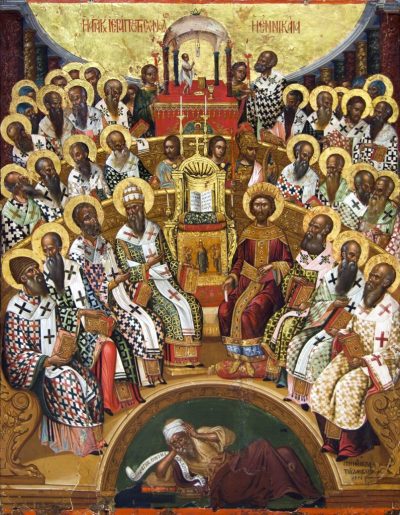
It was at this council that the debate or differences was officially put to an end, when the doctrine or ideology, of the later to be known as the Orthodox faith, became the only accepted theology to explain the True Nature of the Christ, namely the Trinity, the Father, Son & Holy Spirit, One God.
This first universal council concluded that Jesus, was a God and was one with God, this conclusion was sealed and authenticated in the Nicene Creed.
All other ideologies not in line with this Creed, immediate became heresy and blasphemy and these teachings were, forbidden, their adherents exiled and their literature totally extinguished, leaving only the Orthodox traditions that have continued up until our modern age.
However although the Nicene Council and the Nicene Creed, was and is a benchmark in the development of the modern Christian Church, as today at least 99% of the 1 billion plus Christians on earth, still adhere to it.
Nevertheless, contrary to popular belief this Creed, did not end the debate on the nature of Christ, and his relation to God the Father, or the relationship of the Christ to his mother Mariam (Mary).
However, now this debate on the nature of Christ continued to rage within the then accepted orthodox Christian traditions,
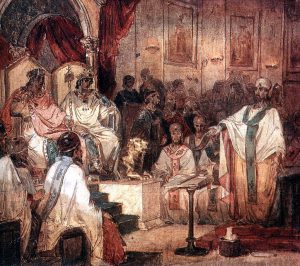 Three more councils took place over the following century that proceeded the Council of Nicene, these were; Council of Constantinople in 381, Council of Ephesus in 431 & the Council of Chalcedon in 451.
Three more councils took place over the following century that proceeded the Council of Nicene, these were; Council of Constantinople in 381, Council of Ephesus in 431 & the Council of Chalcedon in 451.
Each of these councils, although reaffirming the Nicene Creed, meaning that Christ was God & One with the Father, these three Councils that follow dealt, discussed and debated how, i.e. the Nature of the Union.
From these councils it was authenticated and made official orthodox doctrine that Mariam (Mary) was the God Bearer, Mother of God the Theotokos. This was and is still the accepted doctrine of all Orthodox Christians today.
However the debate on the nature of Christ, did not end their either, in fact, it could be said that this debate and the difference in ideologies it created, was the sole cause for the breaking up of the original Orthodox Church that was One Church, sharing One Baptism, Sacraments and One Communion, from 325 AD to 431 AD.
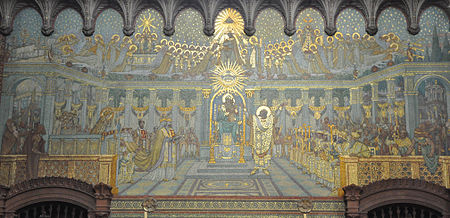 It was at the Council of Ephesus, where the differences, later to be known as schisms surfaced. Ironically the council met specifically to discuss and to come to a final conclusion on the True Nature of Christ, that had supposedly been dealt with at the Nicene Council. However the question posed at this council, was not whether he was God, as this had already been, confirmed, authenticated and made orthodox, but specifically, how was he God, what was his nature, was it the same, similar or completely different? The conclusions drawn from this Ephesus 431 AD and the 451 Council of Chalcedon, would prove to be, not only controversial for the then united Church, but the leading factor in there separation and division, resulting in a separate Christian heritage and tradition from that time until now,of both East & West, i.e. never again the twain shall meet.
It was at the Council of Ephesus, where the differences, later to be known as schisms surfaced. Ironically the council met specifically to discuss and to come to a final conclusion on the True Nature of Christ, that had supposedly been dealt with at the Nicene Council. However the question posed at this council, was not whether he was God, as this had already been, confirmed, authenticated and made orthodox, but specifically, how was he God, what was his nature, was it the same, similar or completely different? The conclusions drawn from this Ephesus 431 AD and the 451 Council of Chalcedon, would prove to be, not only controversial for the then united Church, but the leading factor in there separation and division, resulting in a separate Christian heritage and tradition from that time until now,of both East & West, i.e. never again the twain shall meet.
This is known in history of the 1st Great Schism, seldom spoken about or known by the majority of Christians in the Western world. This is a very important event, possibly the most important event in the history of the Christian Church, which culminated in the separation of Eastern and Western Christianity, the East represented by the Oriental Christians, including; The Egyptian, Armenian, Syrian & Indian Christian Churches, with the West represented by Roman Catholicism.
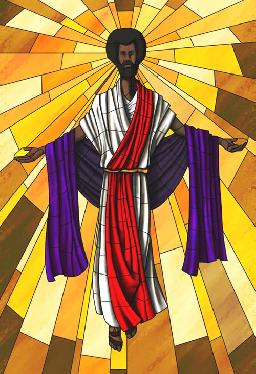 It should be fully understood here that although the Roman Catholics, excommunicated the Oriental Churches, branding them heretics, due to them not accepting the Creed or doctrine established at the Council of Chalcedon, earning them the descriptive title as Non-Chalcedonian, it should be noted that the Non- Chalcedonian’s representing the Oriental Churches, comprised every other orthodox Christians in the world, baring Europeans. Therefore Rome although claiming to have excommunicated them from the one and only Catholic Church, i.e. themselves, what they actually did was seperate themselves from the actual United One Catholic Church, the Orientals, who remain over 1500 years later One United Christian Church.
It should be fully understood here that although the Roman Catholics, excommunicated the Oriental Churches, branding them heretics, due to them not accepting the Creed or doctrine established at the Council of Chalcedon, earning them the descriptive title as Non-Chalcedonian, it should be noted that the Non- Chalcedonian’s representing the Oriental Churches, comprised every other orthodox Christians in the world, baring Europeans. Therefore Rome although claiming to have excommunicated them from the one and only Catholic Church, i.e. themselves, what they actually did was seperate themselves from the actual United One Catholic Church, the Orientals, who remain over 1500 years later One United Christian Church.
This is very important to understand as it is one of the foundations upon which this Temple website is built. Furthermore it separates the East & Western Christian tradition, their histories and heritage, therefore enables Africans and people of colour to claim a total different Christian heritage from Europeans, therefore a heritage not tainted with the horrors done in the name of God, Christ and Christianity.
It also offers and provides us, with TWO, different natures of Christ as percioeved in the West & in the East, Chalcedonian & Non-Chaledonian. Obviously as African cHristians we adhere strictly the Non-Chalcedonian philosophy and reject the Chaledonian creed, followed by all Roman Catholics and to a degree all European Christians, including Protestants.
To this end we present the accepted Nature of Christ and his relationship to the Father, based upon the Non-Chalcedonian Oriental Christian tradition which states that;
Following, then, the holy Fathers, we all with one voice teach that it should be confessed that our Lord Jesus Christ is one and the same Son, the Same perfect in Godhead, the Same perfect in manhood, truly God and truly man, the Same [consisting] of a rational soul and a body; homoousios (consubstantial) with the Father as to His Godhead, and the Same homoousios (consubstantial) with us as to His manhood; in all things like unto us, sin only excepted; begotten of the Father before ages as to His Godhead, and in the last days, the Same, for us and for our salvation, of Mary the Virgin Theotokos as to His manhood;
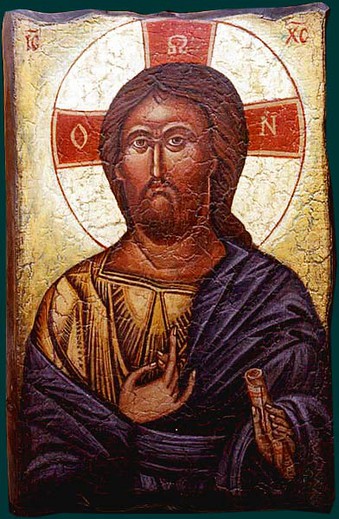 One and the same Christ, Son, Lord, Only-begotten, made known in two natures [which exist] without confusion, without change, without division, without separation; the difference of the natures having been in no wise taken away by reason of the union, but rather the properties of each being preserved, and [both] concurring into one prosopon and one hypostasis— not parted or divided into two prosopa, but one and the Same Son and Only-begotten, the divine Logos, the Lord Jesus Christ; even as the prophets from of old [have spoken] concerning Him, and as the Lord Jesus Christ Himself has taught us, and as the Symbol of the Fathers.
One and the same Christ, Son, Lord, Only-begotten, made known in two natures [which exist] without confusion, without change, without division, without separation; the difference of the natures having been in no wise taken away by reason of the union, but rather the properties of each being preserved, and [both] concurring into one prosopon and one hypostasis— not parted or divided into two prosopa, but one and the Same Son and Only-begotten, the divine Logos, the Lord Jesus Christ; even as the prophets from of old [have spoken] concerning Him, and as the Lord Jesus Christ Himself has taught us, and as the Symbol of the Fathers.
The only difference with the Chalcedon Creed or Roman Ideology is that they believe and accept TWO separate natures of Christ, Human & Divine, whilst the Non-Chalcedonians except the same TWO Natures, but without intermingling, fully God & Fully Man.
Although a very minute difference and possibly only a misunderstanding in wording, the idea of TWO separate natures that intermingle to form One Nature, or the TWO natures both containing the Divine & Human natures simultaneously is totally incompatible to African & Eastern spirituality.
Nevertheless although The Temple of Yahshuah Website, endorses the Non-Chalcedonian Creed perception of the Nature of Christ, we are not however confined only to this particular ideology. In addition to this Creed we also accept all the Councils and Creeds that came before.
But most importantly and significantly, the Nature of Christ, perceived within this websites, can best be understood, from our own Temple Creed that pre-dates all the aforementioned creeds, by thousands of Years. It is this Creed and based upon this creed alone that we perceive and proclaim the True Nature of Christ.
This is of course; The Nile Valley or Hapi Valley Creed, found in
numerous places throughout this websites, called “God is One”.
Please read and study this 6000 year old Creed, to get a better overstanding and a enlightened insight to the True Nature of Yahshuah Karast Mesu and His True Relation to The Father, Yahovayah.
6. What is his Gospel?
Exactly what this Temple websites, considers, proclaims or presents as the Gospel.
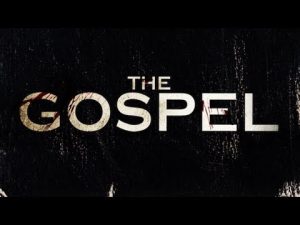 To know and understand exactly what the Gospel is is very important. This may seem very odd to most , as most people believe that they already possess a full understanding of what the Gospel is.
To know and understand exactly what the Gospel is is very important. This may seem very odd to most , as most people believe that they already possess a full understanding of what the Gospel is.
In fact there is such a certainty that this question is never considered, posed or asked. However contrary to popular belief most people including Christians, do not know what actually forms the Gospel.
In fact the traditional and customary view held by most people is that the Gospel or Gospels is/are contains the books of the new testament, the stories of Jesus life and his message. Although to a degree this is true, however not totally, as the Gospel, singular not Gospels, has a very strict criteria, so therefore scrutiny of what is consider Gospel and what isnt, is necessary to determine exactly what is the Gospel.
Now as mentioned it is customary in the Christian tradition to refer to the Gospels, plural, particular in reference to Matthew, Mark, Luke & John. This would indicate that there are multiple Gospels and insinuating that the entire contents of the aforementioned evangelist books, are to be included within this collection. With this point of view, some Christians go even further and include all the books of the new testament, to represent the Gospels or collectively the Gospel.
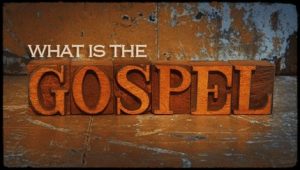 This may not seem strange at first and even seem proper and correct to most, particularly if they hold a similar belief. This idea is further corroborated in the Holy Scriptures itself, leaving no doubt whatsoever in their minds, of what the Gospel represents.
This may not seem strange at first and even seem proper and correct to most, particularly if they hold a similar belief. This idea is further corroborated in the Holy Scriptures itself, leaving no doubt whatsoever in their minds, of what the Gospel represents.
Nevertheless this belief, idea and possibly accepted fact, even though confirmed and corroborated in the Bible, is actually far from being true. In truth the Gospel represents a very strict criteria, it can not be pluralised as there is only one and could only be one, just as if you pluralise Christ to Christ’s, although their may be claims of many Christ’s, their is actually only one that is authentic and all the others, imitation, forgeries or deceptions, hoping to turn people from the true Christ.
So we have it and so it is, when we claim, refer to or accept that there is or could be more than one Gospel. There is Only One Christ, therefore their could be Only One Gospel. This Gospel representing exclusively what the True Christ spoke, out of his own mouth and nothing else.
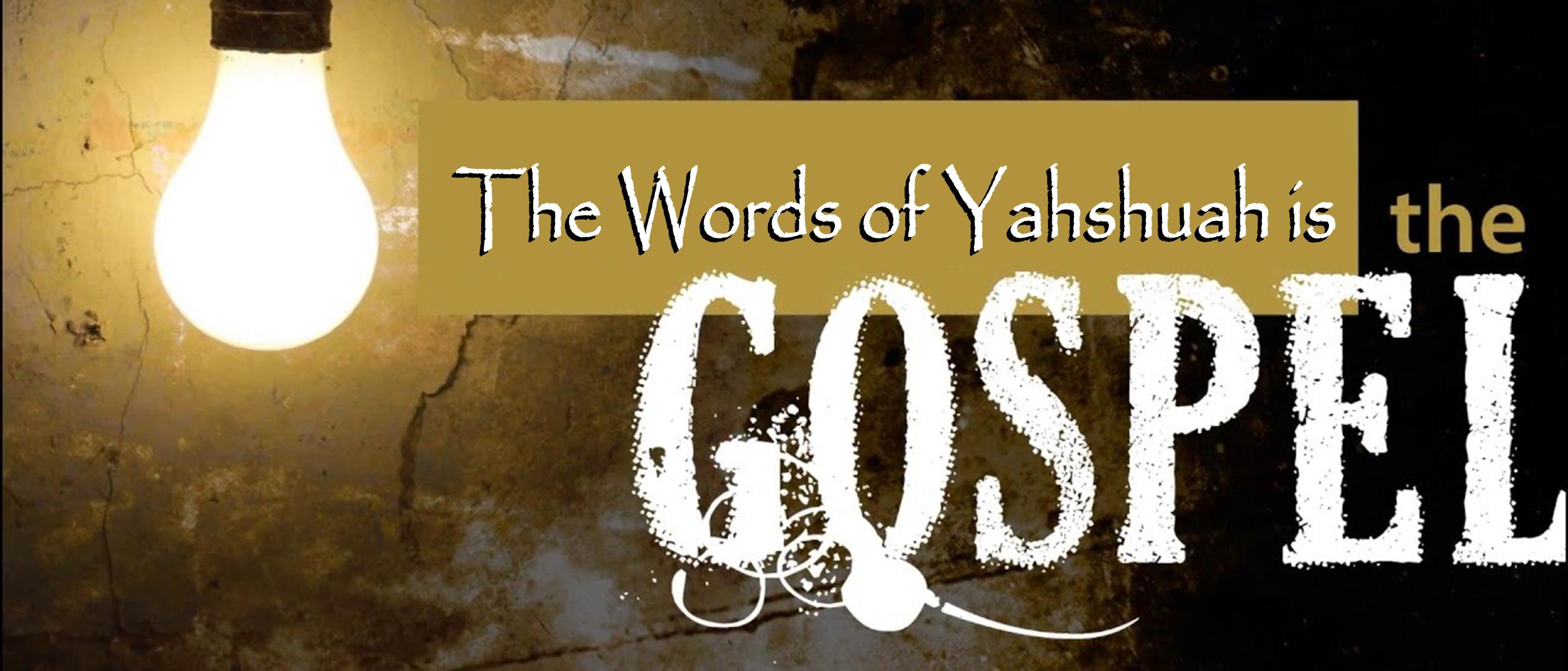
Therefore the Gospel is what Yahshuah spoke and taught, however what is customarily thought to be Gospel is actually the spreading and confirming of the Gospel given by Yahshuah, supposedly without, subtraction, addition or alteration. This fact is confirmed throughout the holy scripture by all and every disciple and apostle and was the main theme of there ministry, that they were spreading the Gospel of Yahshuah exclusively. This is reiterated over and over be all the early followers of Yahshuah, as can be found throughout the books of the New Testament.
 However as mentioned the notion of multiple Gospels is also substantiated and confirmed, by the Holy Word and in most cases we would recommend that you accept its conclusion. Nevertheless in this and in other passages specifically relating to Yahshuah we, don’t blindly accept but test and scrutinise it, to see if it is comparable and compatible to the Gospel that Yahshuah actually spoke and if it does not we reject it.
However as mentioned the notion of multiple Gospels is also substantiated and confirmed, by the Holy Word and in most cases we would recommend that you accept its conclusion. Nevertheless in this and in other passages specifically relating to Yahshuah we, don’t blindly accept but test and scrutinise it, to see if it is comparable and compatible to the Gospel that Yahshuah actually spoke and if it does not we reject it.
This may seem very strange to most and very unchristian like to many, however our intention is not to be liked, accepted or to be wrong or right, but simply to be sure that we are following the Good Shepherd. Who told us himself that only he has the gospel, which belongs to him as given by the father, Luke 4:18. However Paul on occasions Rom_2:16 & 2Ti_2:8 insinuates to have his own Gospel, as well as a collective one 2Co_4:3 & 1Th_1:5, when he refers to our. Now based upon the context in which Paul makes these statements and based upon the fact in and on every other instance and occasions when he refers to the Gospel he clearly indicates that he is referencing the Gospel of Yahshuah.
Therefore in no way do we accuse Paul of making this claim, or that the Bible suggests this, but that it can be easily misunderstood and construed to form a ideology and incorrect notion that there is more than one Gospel, which there is not.
7. Why he came, his mission?
The Temple View on the reasons The Christ came, his mission and purpose.
Hidden content
8. When he actually lived?
The certainty that Christ Lived in Spirit and in Flesh,this Temple being a Living Testimony.
Hidden content
9. Where he lived and who he ministered to?
The importance of Israel, Judea, Jerusalem & the Hebrews, Israelites & Jews in this Temple.
Hidden content
10. Christ’s relationship to Man, historically and now?
How this Temple perceives, Christ’s specific relation to individuals, nations, believers & none-believers
Hidden content
